- TOP
- Search Criteria
- Great Spots for Plum Blossoms in Kansai
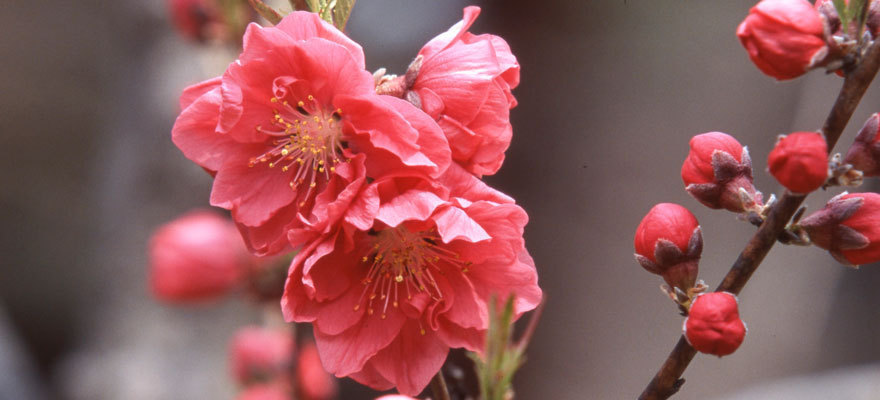
STORY
Great Spots for Plum Blossoms in Kansai
You know that winter is ending at last when you start seeing ume or plum blossoms. Some of the earliest blooming flowers in Japan, you may even see hardy ume blooming while there is still snow on the ground! They come in a variety of cultivars, the colors of which include creamy whites and pinks that range from coral to fuchsia. The flower shape also varies between species.
Ume typically come into full bloom in the Kansai region between mid-February and early-March. While the weather may still be quite chilly, doing some early-spring hanami or flower viewing is highly recommended. For some ideas about where to go, check out these beautiful spots famous for plum blossoms in Kyoto, Osaka, and Nara.
Kitano Tenmangu Shrine | 北野天満宮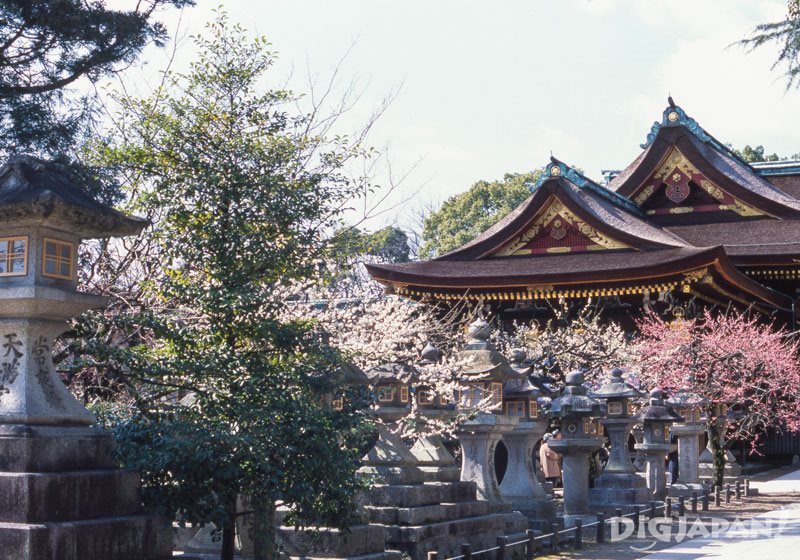
Fifty different cultivars and nearly 1,500 trees bloom against the gorgeous backdrop of Kitano Tenmangu, a shrine popular for its reputed ability to grant wishes for academic success. The colors of the trees here are a beautiful mix of white and deep pinks. During the flower viewing season, they open a teahouse in the garden where visitors can enjoy a cup of ume cha (plum tea) and a Japanese sweet. There is also a plum blossom festival held on here, a highlight of which is participating in tea ceremony performed by the maiko and geisha of the Kamishichiken geisha district.
Peak blooming season: early-February thru late-March
Address: Bakuro-cho, Kamigyo-ku, Kyoto-shi, Kyoto
Access: take the City Bus 50 or 101 from JR Kyoto Station to the Kitano Tenmangu-mae stop (approx. 30 min)
*There are plum trees outside of the plum grove as well that can be viewed for free.
Plum Blossom Festival | 梅花祭
Date: February 25, 2020
Website: http://kitanotenmangu.or.jp/top_en.php
Kyoto Imperial Palace Park | 京都御苑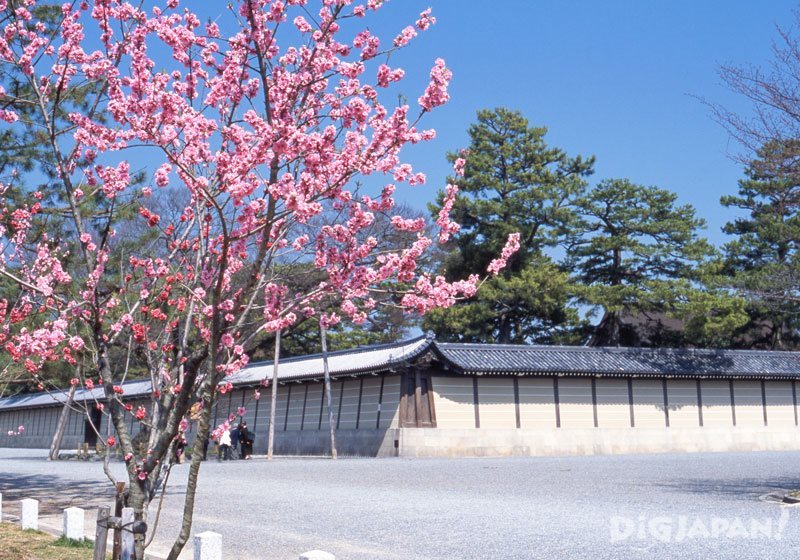
Some two hundred plum trees grow along the south-west side of the Kyoto Imperial Palace, or Kyoto Gosho as it's called in Japanese. The trees that grow here are said to be the product of grafting branches of plum trees from every shrine in the city of Kyoto, a project undertaken mainly in the year 1945.
Peak blooming season: mid-January thru mid-March
Address: 3 Kyotogyoen, Kamigyo-ku, Kyoto-shi, Kyoto
Hours: park can be entered freely
Entry fee: free
Access: 10 min walk from Subway Marutamachi Station (Karasuma Line)
Website: https://www.env.go.jp/garden/kyotogyoen/english/index.html
Nijo Castle | 二条城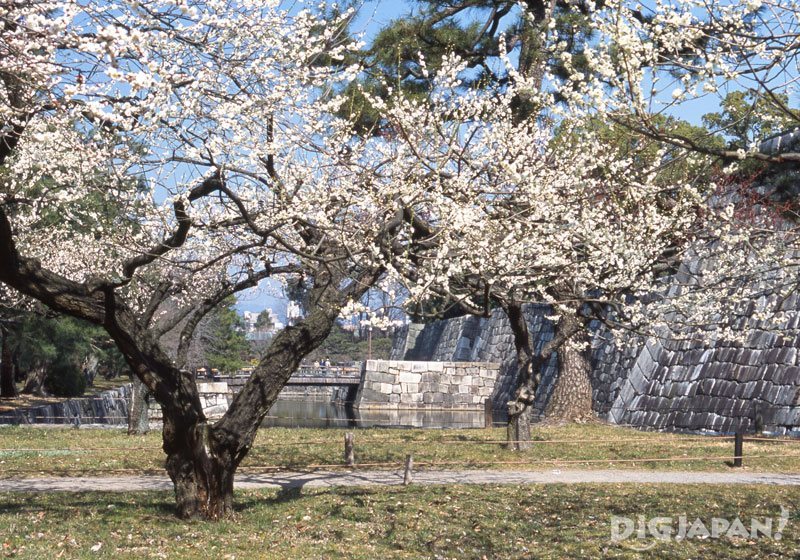
There are approximately one hundred thirty trees on the castle grounds, the majority of which grow in a plum grove located on the southwest side of the castle. Out of the many varieties of plum trees here, the Genpei is particularly interesting. Both white and pink flowers bloom on the same tree. It is named after two opposing clans of the Kamakura period: the Taira and the Minamoto. The white flowers represent the Minamoto clan and the red flowers represent the Taira.
Peak blooming season: late-February thru early-March
Address: 541 Nijojo-cho, Nakagyo-ku, Kyoto-shi, Kyoto
Hours: 8:45am~5:00pm (last entry 4:00pm)
Entry fee:
Adults 620 yen
Access: direct access from Subway Nijojo-mae Station (Tozai Line)
Website: http://kyoto.travel/en/shrine_temple/119
Zuishin-in Temple | 随心院
Out of the some two hundred plum trees that bloom at Zuishin-in, this temple is particularly well-known for a late-blooming variety of light pink plum blossom known as hanezu. This flower also lends its name to a dance performed here called the Hanezu Odori, which is performed on the last Sunday of March. Young women dance while dressed in traditional short-sleeved garments the color of the hanezu blossoms. You can watch the dance here and learn more about the temple in this video.
Peak blooming season: mid-March
Address: 35 Onogoryo-cho, Yamashina-ku, Kyoto
Hours: 9:00am~5:00pm (last entry 4:30pm)
Access: 5 min walk from Subway Ono Station (Tozai Subway Line)
Entry fee: 500 yen
Entry fee to the plum grove: 500 yen
Hanezu Odori Information
Date: Sunday, March 26, 2017
Performance times: 11:00am, 12:30pm, 1:30pm, and 3:00pm
Admission:
Adults 1,000 yen
Middle school students 800 yen
Fee includes the dance + admission to the garden and temple.
Website (Japanese only): http://www.zuishinin.or.jp/
Osaka Castle | 大阪城

A must-see spot anytime time of year, Osaka Castle is particularly lovely when its grove of plum trees is in bloom. Located to the south-east of the castle keep, this grove is home to 1,250 trees representing an impressive ninety-three cultivars of plum blossoms.
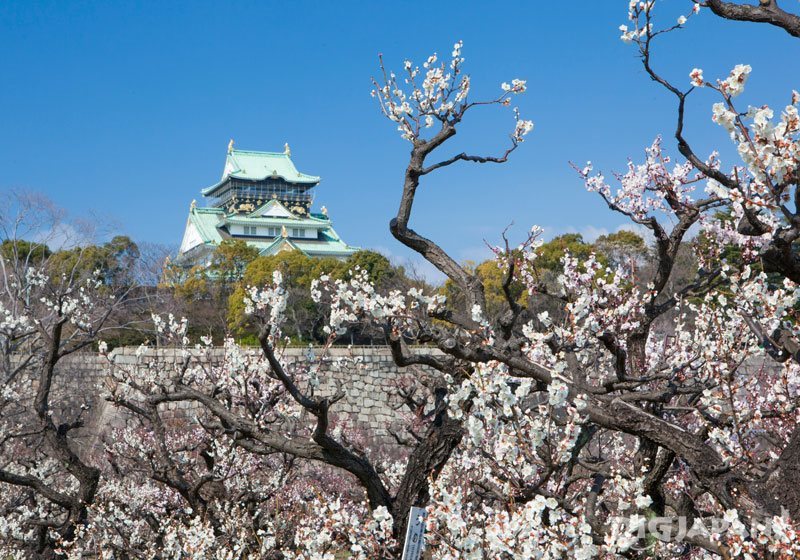
Peak blooming season: mid-February thru mid-March
Address: Chuo-ku, Osaka-shi, Osaka
Hours: park can be entered freely
Entry fee: free
Access: 10 min walk from JR Osakajokoen Station (Osaka Loop Line)
Website: http://www.osakacastle.net/english/
Domyoji Tenmangu Shrine | 道明寺天満宮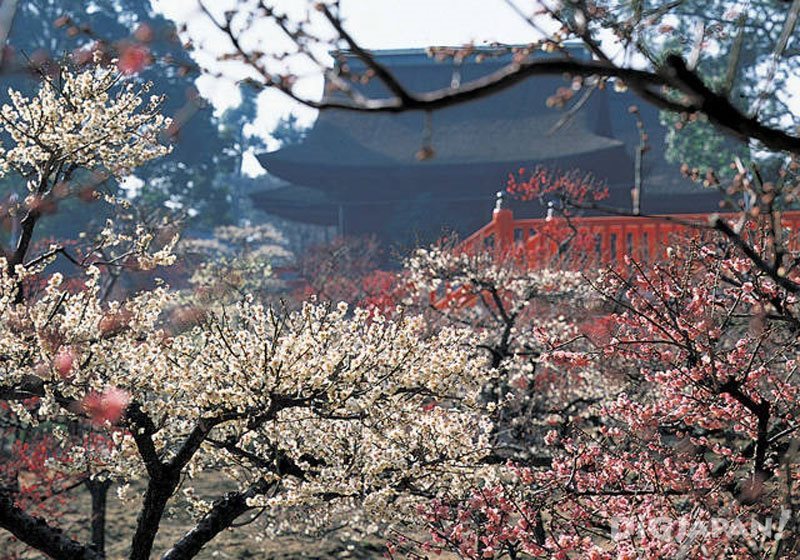
Like Kitano Tenmangu in Kyoto, Domyoji Tenmangu is also said to enshrine the Shinto god of learning. Inside the plum garden are eight hundred trees representing approximately eighty cultivars. There is a plum blossom festival held from February 10th to March 15th. During this period, there is also a lovely exhibition of plum blossom bonsai trees are on display from January 25th to February 28th.
Peak blooming period: mid-February thru early-March
Address: 1-16-40 Domyoji, Fujiidera-shi, Osaka
Hours: 9:00am~5:00pm (last entry 4:30pm)
Entry fee: free
*During the plum blossom festival, adults will be charged an entry fee of 300 yen. Middle school children and younger are free.
Access: 3 min walk from Kintetsu Domyoji Station (Minami Osaka Line)
Plum Blossom Festival
Dates: February 9 ~ March 13, 2020
Website (Japanese only): http://www.domyojitenmangu.com/
Nara Park | 奈良公園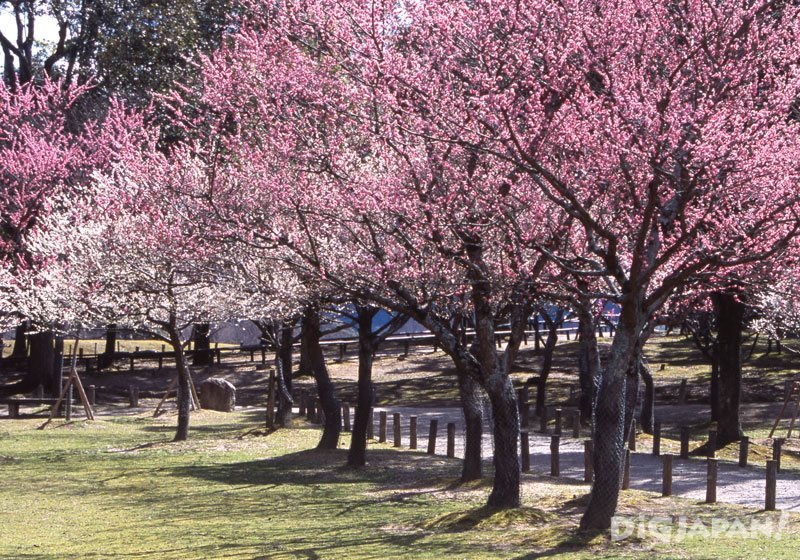
Nara Park is filled with famous temples and shrines such as Todai-ji, which is home to the Great Buddha, as well as friendly deer who will happily approach anyone who seems to have a tasty deer senbei cracker to share with them. In the early spring, it is also offers visitors a splendid display of plum blossoms in the Kataoka Bai-en plum grove. There are about two hundred fifty red and white plum trees here.
Peak blooming period: late-February thru late-March
Address: Takabatake-cho, Nara-shi, Nara
Hours: park can be entered freely
Entry fee: free
Access: 5 min walk from Kitetsu Nara Station (Kintetsu Nara Line)
Website (Japanese only): http://nara-park.com/
Tsukigase Baikei | 月ヶ瀬梅渓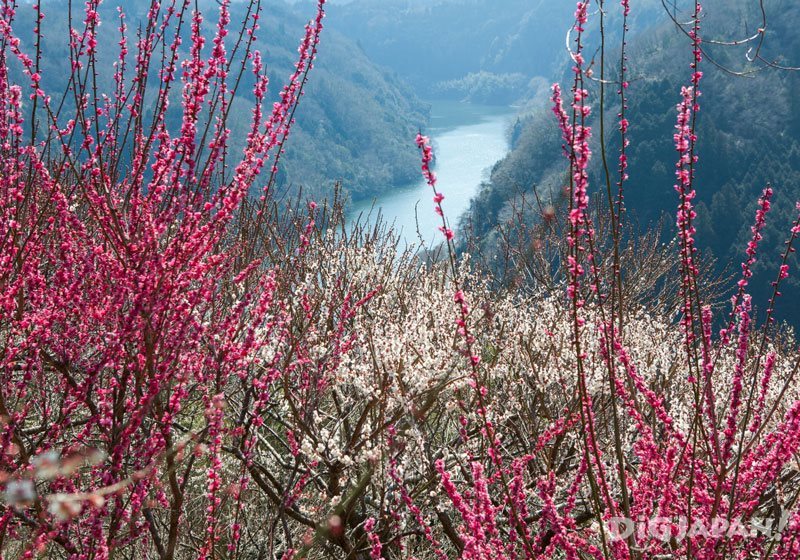
Tsukigase Baikei is said to be one of the best plum groves in the Kansai region. From the shores of the lake to the mountainside, the area is covered by nearly one 10,000 plum trees blooming in white and red. There is also a plum blossom festival held here.
Peak blooming period: early thru late-March
Address: 21-8 Tsukigasenagahiki, Nara-shi, Nara
Hours: area can be entered freely
Entry fee: free
Access: take the Mie Kotsu Bus bound for Momogano departing from Uenoshi Station to the Takaosan bus stop (30 min.). Tsukigase Baike is a 5 min walk from the stop.
*There is a special bus service that runs from JR Tsukigaseguchi Station to Tsukigase Baike.
Website (Japanese only): https://tsukigase-kanko.or.jp/
Plum Blossom Festival | 梅まつり
Event period: February 16~March 31, 2020
Do you have a favorite spot for plum blossoms in Kyoto, Osaka, or Nara? If so, let us know in the comments!
*The above article is based on information from February 2017.
*This article has been updated with the latest information as of January 2020.
Ume typically come into full bloom in the Kansai region between mid-February and early-March. While the weather may still be quite chilly, doing some early-spring hanami or flower viewing is highly recommended. For some ideas about where to go, check out these beautiful spots famous for plum blossoms in Kyoto, Osaka, and Nara.
Plum Blossoms in Kyoto
Kitano Tenmangu Shrine | 北野天満宮

Fifty different cultivars and nearly 1,500 trees bloom against the gorgeous backdrop of Kitano Tenmangu, a shrine popular for its reputed ability to grant wishes for academic success. The colors of the trees here are a beautiful mix of white and deep pinks. During the flower viewing season, they open a teahouse in the garden where visitors can enjoy a cup of ume cha (plum tea) and a Japanese sweet. There is also a plum blossom festival held on here, a highlight of which is participating in tea ceremony performed by the maiko and geisha of the Kamishichiken geisha district.
Information
Kitano Tenmangu | 北野天満宮Peak blooming season: early-February thru late-March
Address: Bakuro-cho, Kamigyo-ku, Kyoto-shi, Kyoto
Access: take the City Bus 50 or 101 from JR Kyoto Station to the Kitano Tenmangu-mae stop (approx. 30 min)
*There are plum trees outside of the plum grove as well that can be viewed for free.
Plum Blossom Festival | 梅花祭
Date: February 25, 2020
Website: http://kitanotenmangu.or.jp/top_en.php
Kyoto Imperial Palace Park | 京都御苑

Information
Kyoto Imperial Palace Park | 京都御苑Peak blooming season: mid-January thru mid-March
Address: 3 Kyotogyoen, Kamigyo-ku, Kyoto-shi, Kyoto
Hours: park can be entered freely
Entry fee: free
Access: 10 min walk from Subway Marutamachi Station (Karasuma Line)
Website: https://www.env.go.jp/garden/kyotogyoen/english/index.html
Nijo Castle | 二条城

There are approximately one hundred thirty trees on the castle grounds, the majority of which grow in a plum grove located on the southwest side of the castle. Out of the many varieties of plum trees here, the Genpei is particularly interesting. Both white and pink flowers bloom on the same tree. It is named after two opposing clans of the Kamakura period: the Taira and the Minamoto. The white flowers represent the Minamoto clan and the red flowers represent the Taira.
Information
Nijo Castle | 二条城Peak blooming season: late-February thru early-March
Address: 541 Nijojo-cho, Nakagyo-ku, Kyoto-shi, Kyoto
Hours: 8:45am~5:00pm (last entry 4:00pm)
Entry fee:
Adults 620 yen
Access: direct access from Subway Nijojo-mae Station (Tozai Line)
Website: http://kyoto.travel/en/shrine_temple/119
Zuishin-in Temple | 随心院

Out of the some two hundred plum trees that bloom at Zuishin-in, this temple is particularly well-known for a late-blooming variety of light pink plum blossom known as hanezu. This flower also lends its name to a dance performed here called the Hanezu Odori, which is performed on the last Sunday of March. Young women dance while dressed in traditional short-sleeved garments the color of the hanezu blossoms. You can watch the dance here and learn more about the temple in this video.
Information
Zuishin-In Temple | 随心院Peak blooming season: mid-March
Address: 35 Onogoryo-cho, Yamashina-ku, Kyoto
Hours: 9:00am~5:00pm (last entry 4:30pm)
Access: 5 min walk from Subway Ono Station (Tozai Subway Line)
Entry fee: 500 yen
Entry fee to the plum grove: 500 yen
Hanezu Odori Information
Date: Sunday, March 26, 2017
Performance times: 11:00am, 12:30pm, 1:30pm, and 3:00pm
Admission:
Adults 1,000 yen
Middle school students 800 yen
Fee includes the dance + admission to the garden and temple.
Website (Japanese only): http://www.zuishinin.or.jp/
Plum Blossoms in Osaka
Osaka Castle | 大阪城

A must-see spot anytime time of year, Osaka Castle is particularly lovely when its grove of plum trees is in bloom. Located to the south-east of the castle keep, this grove is home to 1,250 trees representing an impressive ninety-three cultivars of plum blossoms.

Information
Osaka Castle | 大阪城Peak blooming season: mid-February thru mid-March
Address: Chuo-ku, Osaka-shi, Osaka
Hours: park can be entered freely
Entry fee: free
Access: 10 min walk from JR Osakajokoen Station (Osaka Loop Line)
Website: http://www.osakacastle.net/english/
Domyoji Tenmangu Shrine | 道明寺天満宮

Like Kitano Tenmangu in Kyoto, Domyoji Tenmangu is also said to enshrine the Shinto god of learning. Inside the plum garden are eight hundred trees representing approximately eighty cultivars. There is a plum blossom festival held from February 10th to March 15th. During this period, there is also a lovely exhibition of plum blossom bonsai trees are on display from January 25th to February 28th.
Information
Domyoji Tenmangu Shrine | 道明寺天満宮Peak blooming period: mid-February thru early-March
Address: 1-16-40 Domyoji, Fujiidera-shi, Osaka
Hours: 9:00am~5:00pm (last entry 4:30pm)
Entry fee: free
*During the plum blossom festival, adults will be charged an entry fee of 300 yen. Middle school children and younger are free.
Access: 3 min walk from Kintetsu Domyoji Station (Minami Osaka Line)
Plum Blossom Festival
Dates: February 9 ~ March 13, 2020
Website (Japanese only): http://www.domyojitenmangu.com/
Plum Blossoms in Nara
Nara Park | 奈良公園

Nara Park is filled with famous temples and shrines such as Todai-ji, which is home to the Great Buddha, as well as friendly deer who will happily approach anyone who seems to have a tasty deer senbei cracker to share with them. In the early spring, it is also offers visitors a splendid display of plum blossoms in the Kataoka Bai-en plum grove. There are about two hundred fifty red and white plum trees here.
Information
Nara Park | 奈良公園Peak blooming period: late-February thru late-March
Address: Takabatake-cho, Nara-shi, Nara
Hours: park can be entered freely
Entry fee: free
Access: 5 min walk from Kitetsu Nara Station (Kintetsu Nara Line)
Website (Japanese only): http://nara-park.com/
Tsukigase Baikei | 月ヶ瀬梅渓

Tsukigase Baikei is said to be one of the best plum groves in the Kansai region. From the shores of the lake to the mountainside, the area is covered by nearly one 10,000 plum trees blooming in white and red. There is also a plum blossom festival held here.
Information
Tsukigase Baikei | 月ヶ瀬梅渓Peak blooming period: early thru late-March
Address: 21-8 Tsukigasenagahiki, Nara-shi, Nara
Hours: area can be entered freely
Entry fee: free
Access: take the Mie Kotsu Bus bound for Momogano departing from Uenoshi Station to the Takaosan bus stop (30 min.). Tsukigase Baike is a 5 min walk from the stop.
*There is a special bus service that runs from JR Tsukigaseguchi Station to Tsukigase Baike.
Website (Japanese only): https://tsukigase-kanko.or.jp/
Plum Blossom Festival | 梅まつり
Event period: February 16~March 31, 2020
Do you have a favorite spot for plum blossoms in Kyoto, Osaka, or Nara? If so, let us know in the comments!
*The above article is based on information from February 2017.
*This article has been updated with the latest information as of January 2020.

Liked this story? Like DiGJAPAN!
on Facebook for daily updates!
THIS ARTICLE IS BASED ON INFORMATION FROM 02 20,2017 Author:Rachael Ragalye






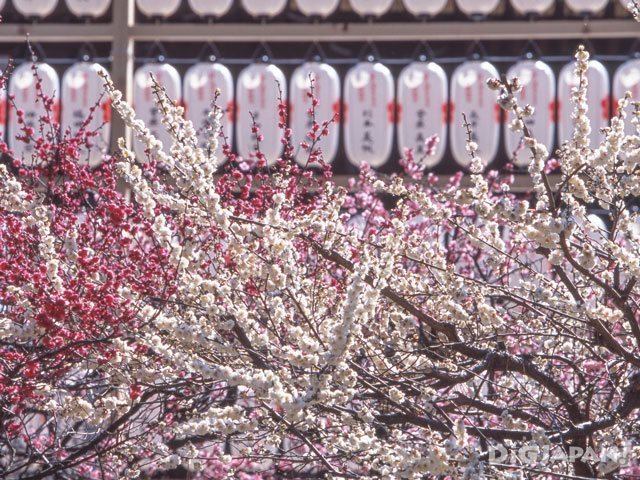
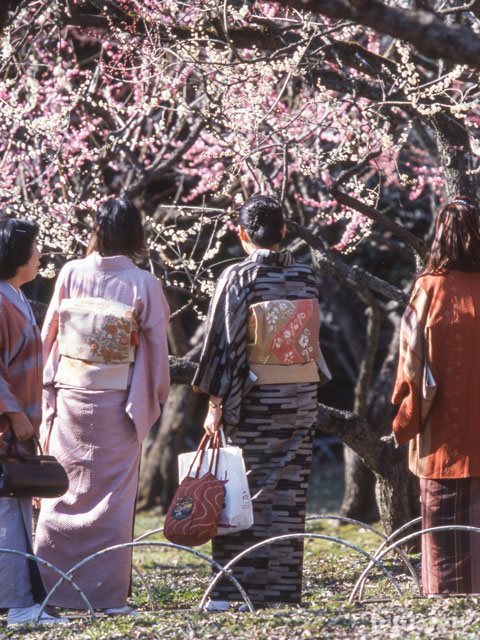
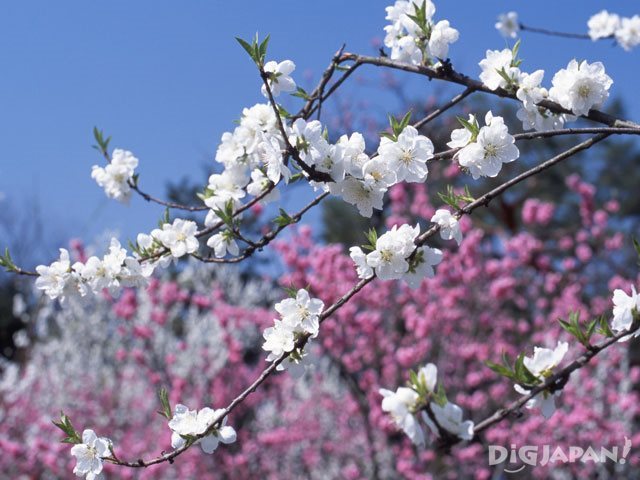
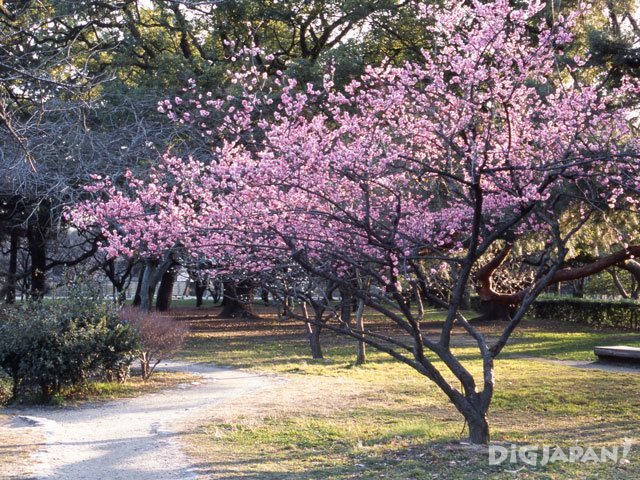
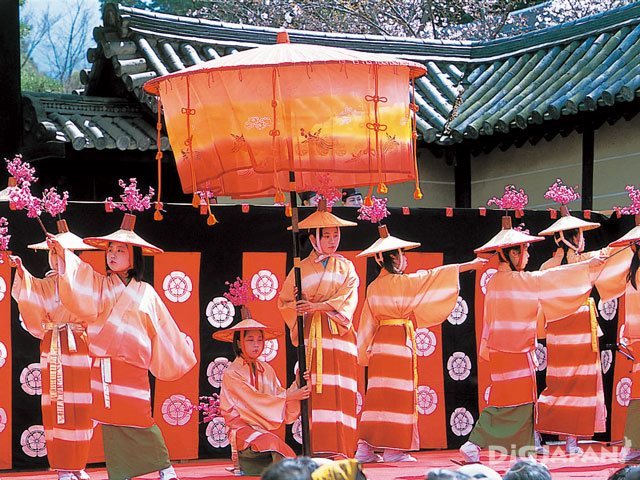
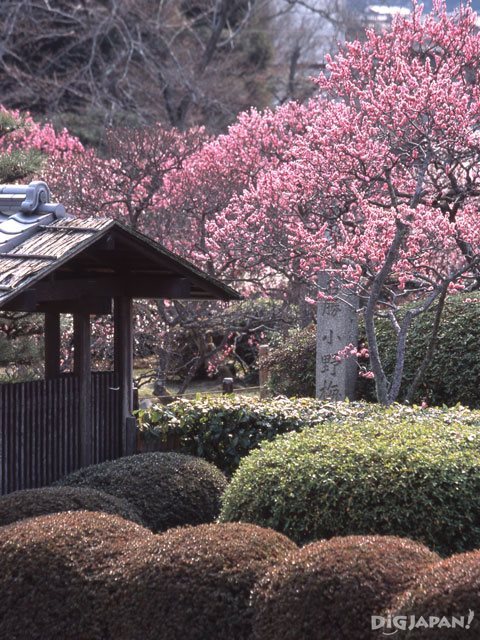
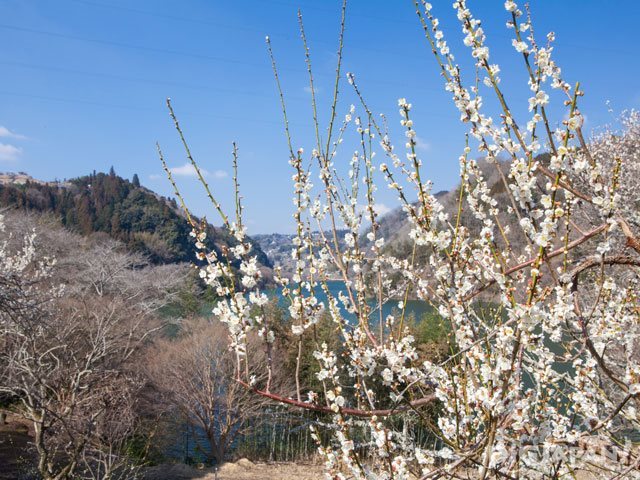







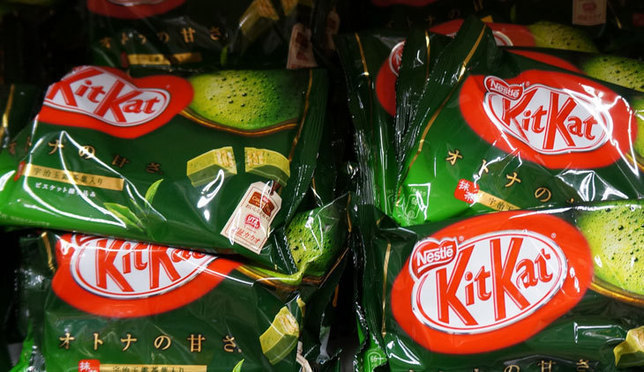

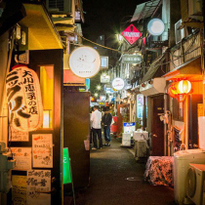
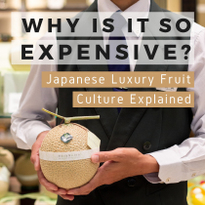
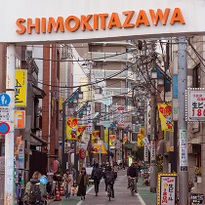




NEW COMMENT | 0 COMMENTS
Open a DiGJAPAN!
account to comment.
Open a DiGJAPAN! Account